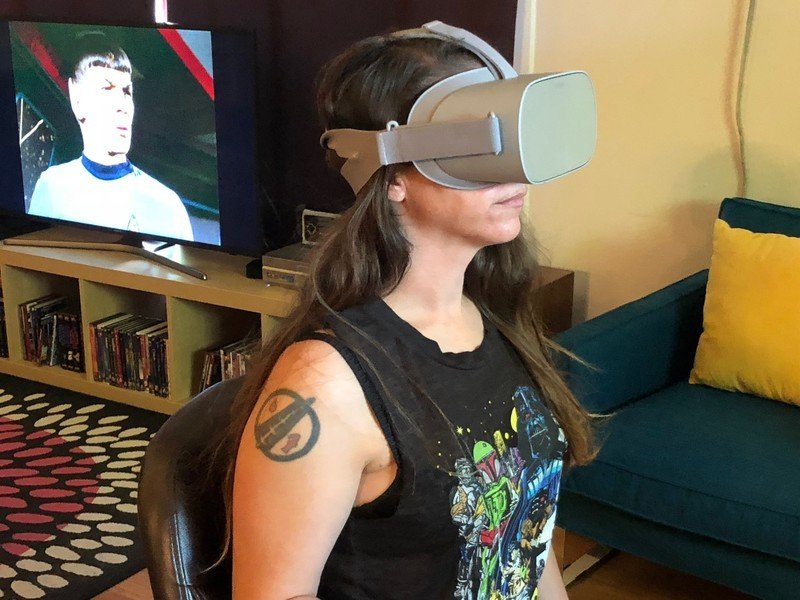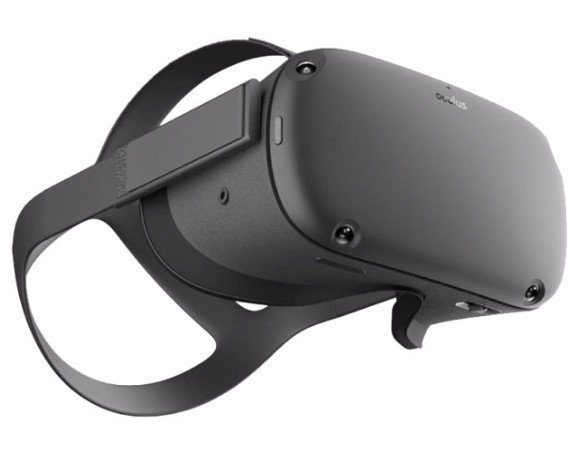Can you enjoy Oculus Quest from a wheelchair?

Best answer: Depending on your level of mobility, yes. The Quest has plenty of experiences with a seated mode option, and the lack of wires allows wheelchair users to play without any problematic upkeep. Yet, Oculus lacks an accessible-height option in Steam VR. Users with limited motion may find moving around the room or using Touch controllers more difficult than a simpler device with 3DoF (head tilting only) tracking like on the Go.
- No wires, no problem: Oculus Quest (From $400 at Best Buy)
- Limited, easier-to-use features: Oculus Go (From $150 at Best Buy)
- Advanced accessibility settings: Valve Index ($999 on Steam)
Standalone VR, without standing
Purely in terms of hardware, the Quest offers a much better starting point for VR than most wired headsets for movement-restricted users. Spinning around while in a virtual world could lead to inadvertently running over and damaging wires. The Quest leaves you unencumbered and doesn't require any physically taxing setup.
Keep in mind that you will need to have the physical capability to operate a smartphone to set up the Quest and use Touch controllers to navigate the Quest menu to operate apps. Once inside some apps, you'll have the option to control certain games with hand gestures if that's easier, but that isn't available for every game.
Software-wise, there are plenty of excellent games on the Oculus Store that are playable while sitting. Yet, Oculus leaves the decision to include a seated mode up to each developer.
Before you spend your money on a game, check the Oculus Store page and check for "Supported Player Modes" under "Additional Details." If "Sitting" is included, then you should be able to play. Once you open the app, the developer will usually have you select "Seated Mode," so it doesn't track your height as being shorter than average.
Even in Seated Mode, you'll get a physical workout. The Quest tracks your head movement in real-time, which will allow you to bob and weave around virtual obstacles. You'll be expected to use Touch controls to punch, shoot, and more, so be ready to burn plenty of calories. Thankfully, the Guardian obstacle-tracking mode will ensure you don't hurt yourself jabbing out or rolling around the room.
Get the latest news from Android Central, your trusted companion in the world of Android
Oculus Go: a better option for some

Whether physically active or not, most wheelchair users will be able to handle the basic motion controls required for VR games. Yet for those who have more limited mobility in their hands or head as well as their legs, Touch controls, and head tracking could prove difficult.
Plus, the Quest may be unnecessarily costly compared to the Oculus Go. The Go is also wire-free, but only uses basic 3DoF (degrees-of-freedom) tracking, while Quest uses 6DoF. The Go tracks if you tilt your head up, down, left or right, or look left or right, but nothing beyond that. The Quest, however, does all that and follows your movement throughout the room, including vertical height.
To be clear, you'll still prefer 6DoF tracking even if you only play sitting games. The ability to track head movement allows for more dynamic gameplay, while head tilting is mostly useful for looking around in a VR film. Yet, for some wheelchair users with limited torso mobility, 3DoF may offer everything you need for enjoying VR content, without more expensive features that are inaccessible.
Similarly, the Go has a simple, easy-to-grip controller that's similar to a small TV remote. At the same time, the Touch uses two game controllers with more dynamic tracking: excellent for waving your arms around, but extravagant and likely more difficult to use for certain consumers.
Trying out Steam VR
On the reverse side of the spectrum, you may be someone who doesn't want to be restricted to just "sitting" genre games. Unfortunately, games requiring you to stand will track you as being very short, which causes a perspective problem. You'll often find characters talking over your head while you stare at their waists. Plus, you'll have difficulty aiming accurately.
With Oculus, there's no current remedy for this. Yet with a Steam VR device such as a Vive, Windows Mixed Reality, or Valve Index headset, you can manually change your height in the advanced settings menu, adding enough inches to enjoy the experience as the devs intended. Bear in mind, though, that these devices must all be wired to a PC, which makes it much harder to set up and much more expensive to use.

Untethered and uncomplicated
The Oculus Quest comes with a processor, RAM, battery, and storage all built-in, meaning no wires for you to roll over. All head, controller, and hand tracking work without having to set up sensors throughout your space, and there are plenty of "seated" mode experiences available.

Mobile simplicity
The Oculus Go lacks many of the room-tracking and two-controller options of the Quest. Instead, it offers a mobile VR platform perfect for easily finding and watching thousands of available 360-degree videos and basic games that use head-tracking tech.

Pricy, powerful, but leashed
High PPI density, 120 Hz refresh rate, and a 120-degree FOV mean this more traditionally powerful headset must rely on a PC and a powerful graphics card to work. Hardcore gamers will find a way to stay plugged in, in exchange for a larger library of Steam VR games and better height options for enjoying non-Seated mode games.

Michael is Android Central's resident expert on wearables and fitness. Before joining Android Central, he freelanced for years at Techradar, Wareable, Windows Central, and Digital Trends. Channeling his love of running, he established himself as an expert on fitness watches, testing and reviewing models from Garmin, Fitbit, Samsung, Apple, COROS, Polar, Amazfit, Suunto, and more.
